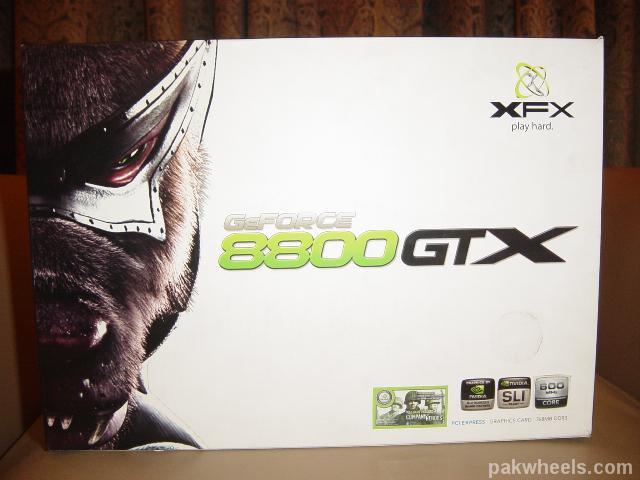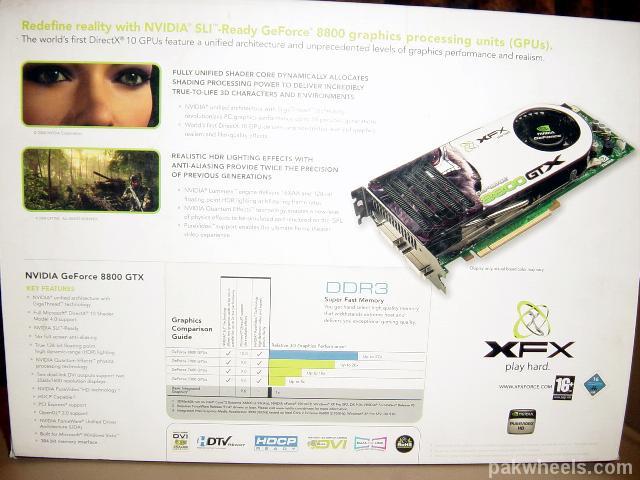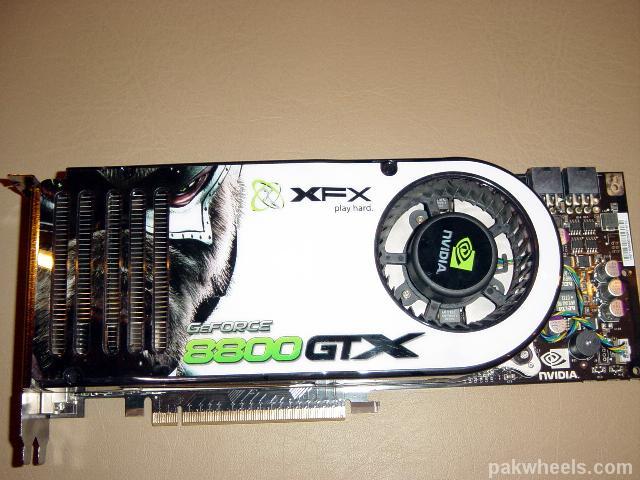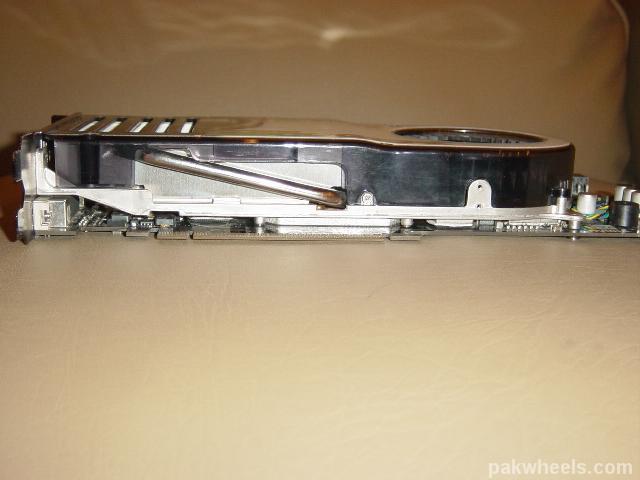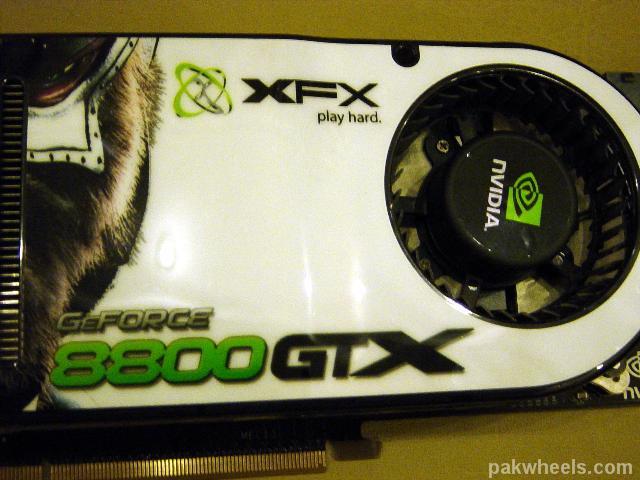Fellow pakwheels members ,
Buying a new setup so selling of my old graphic cards . One sold 1 to go if any 1 interested contact me with your offers .Extreme edition version.
Card Details are as following
GeForce® 8800 GTX 768MB DDR3 XXX
table cellpadding=5" cellspacing=1" width=100%"
tbody
Bus Type
N/A
PCI-E
Performance
N/A
Standard, XT, XXX
GPU Clock MHz
The main attributes of the GPU are the core clock rate, which typically ranges from 250 MHz to 1200 MHz in modern cards.
575 - 630 MHz
Shader Clock (MHz)
The number of pipelines (vertex and fragment shaders), which translate a 3D image characterized by vertices and lines into a 2D image formed by pixels.
1350 MHz
Stream Processors
Through the use of stream processing, computer benefit from the ability to transparently access a large number of 'cores' (or, computational units) on a chip without having to separately manage each and every one of them along with their associated busses, memories, I/O, etc.
128
Texture Fill Rate (billion/sec)
This is the speed at an image can be rendered or "painted". This rate is specified in texels per second, the number of 3D pixels that can be painted per second. A texel is a pixel with depth (3D). The fill rate comes from the combined performance of the clock speed of the processor and the number of pixels it can process per clock cycle, and will tell you how quickly an image can be fully rendered on screen.
36.8 - 40.32 Billion/Sec
Pixels per clock (peak)
This impacts on the rendering capability of the GRU. The clock speed itself is not the critical factor. Rather it is the per-clock performance of the graphics processor, which is indicated by the number of pixels it can process per clock cycle.
64
Memory Interface Bus (bit)
The bit data rate between memory and the GPU.
384
Memory Type
VRAM was typically based on DDR technology. During and after that year, manufacturers moved towards the vastly superior DDR2, GDDR3 and GDDR4.
DDR3
Memory Size (MB)
the video card will have its own video memory which is called Video RAM or VRAM. The VRAM capacity of most modern video cards range from 128 MB to 2.0 GB.
768 MB
Memory Clock (MHz)
The memory clock rate in modern cards are generally between 400 MHz and 2.4 GHz.
1800 - 2000 MHz
Output HDCP Capable
Designed to meet the output protection management (HDCP) and security specifications of the Blu-ray Disc and HD DVD formats, allowing the playback of encrypted movie content on PCs when connected to HDCP-compliant displays. Requires other HDCP-compatible components.
1
Microsoft® DirectX® Support
The standard for today's PCs and next-generation consoles enables stunning and complex effects for cinematic realism. NVIDIA GPUs offer the most complete implementation of the Shader Model feature set-including vertex texture fetch (VTF)-to ensure top-notch compatibility and performance for all DirectX applications.
10
Shader Model Support
Enables stunning and complex special effects. Next-generation shader architecture delivers faster and smoother gameplay.
4
Open GL Optimization and Support
Ensures top-notch compatibility and performance for OpenGL applications.
2.1
Minimum Power Requirement (Watt)
This is the minimum power supply wattage requirement for the graphics card to perform properly.
450
Cooling Fansink
Sometimes known as an active cooling device, a small electrical fan which drives air across a heat sink and as such will generate a small amount of noise. It is more effective than a heat sink alone at cooling.
√
ROHS
The RoHS Directive stands for "the restriction of the use of certain hazardous substances in electrical and electronic equipment". This Directive bans the placing on the EU market of new electrical and electronic equipment containing more than agreed levels of lead, cadmium, mercury, hexavalent chromium, polybrominated biphenyl (PBB) and polybrominated diphenyl ether (PBDE) flame retardants.
√
Profile
Some graphics cards have the capability to swap out the current bracket to make it compatible with low-profile computer systems that require a lower bracket card.
Double
PhysX™ technology
NVIDIA's new GPU PhysX™ technology that renders convincing facial expressions, multiple ultra-high polygon characters in complex environments and convincing physical effects like weather and explosions. NVIDIA PhysX drivers are required to experience in-game GPU PhysX acceleration.
√
CUDA™ technology
NVIDIA CUDA™ technology and the new CUDA enables programmers to offload the most intensive processing tasks from their CPU to their GPU, putting the power of up to 240 multi-threaded processor cores to work for you.
√
SLI™ Technology
Delivers up to 2x the performance of a single GPU configuration for unequaled gaming experiences by allowing two graphics cards to run in parallel. The must-have feature for performance PCI Express® graphics, SLI dramatically scales performance on today’s hottest games.
√
/tbody
/table
